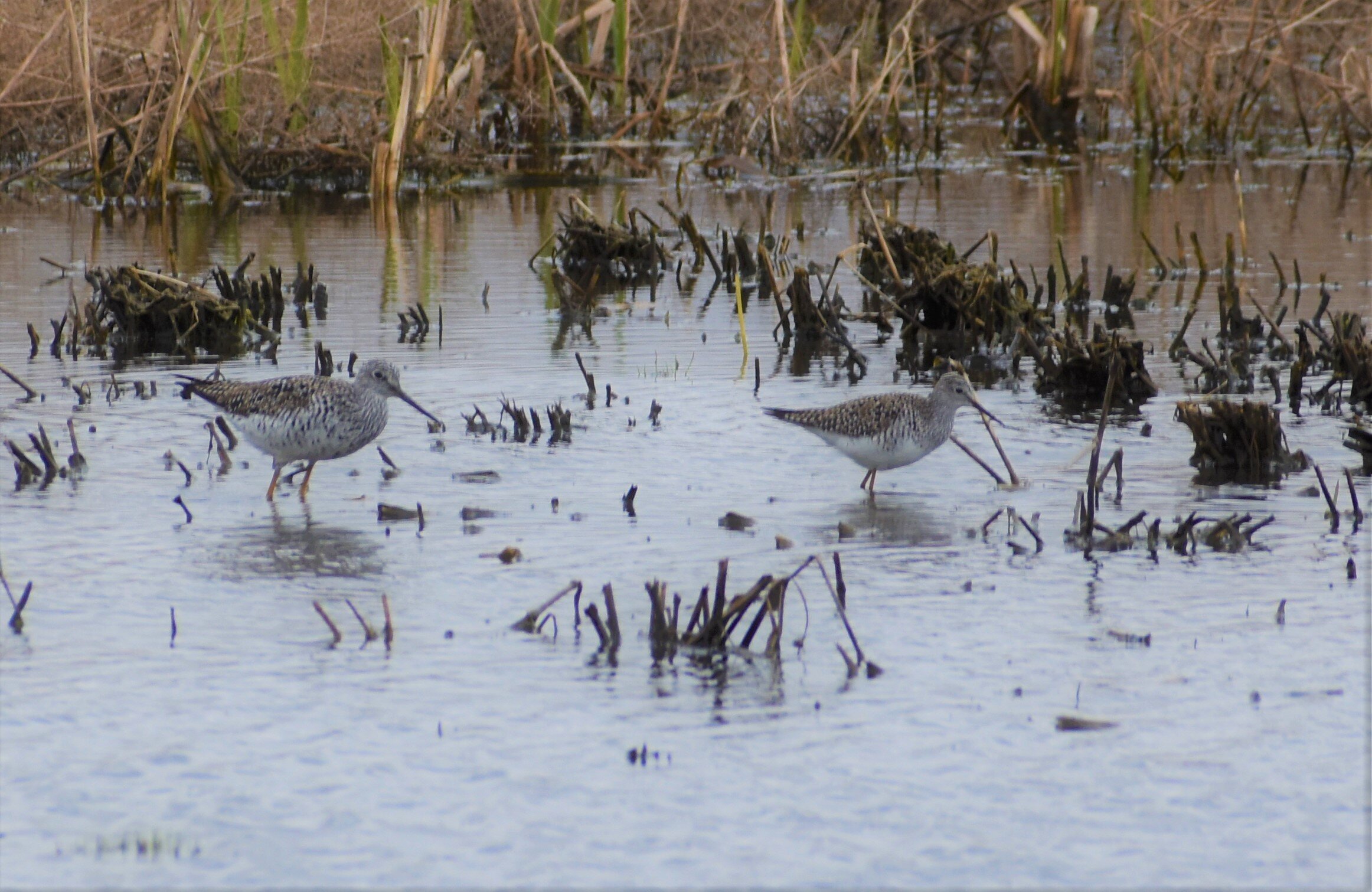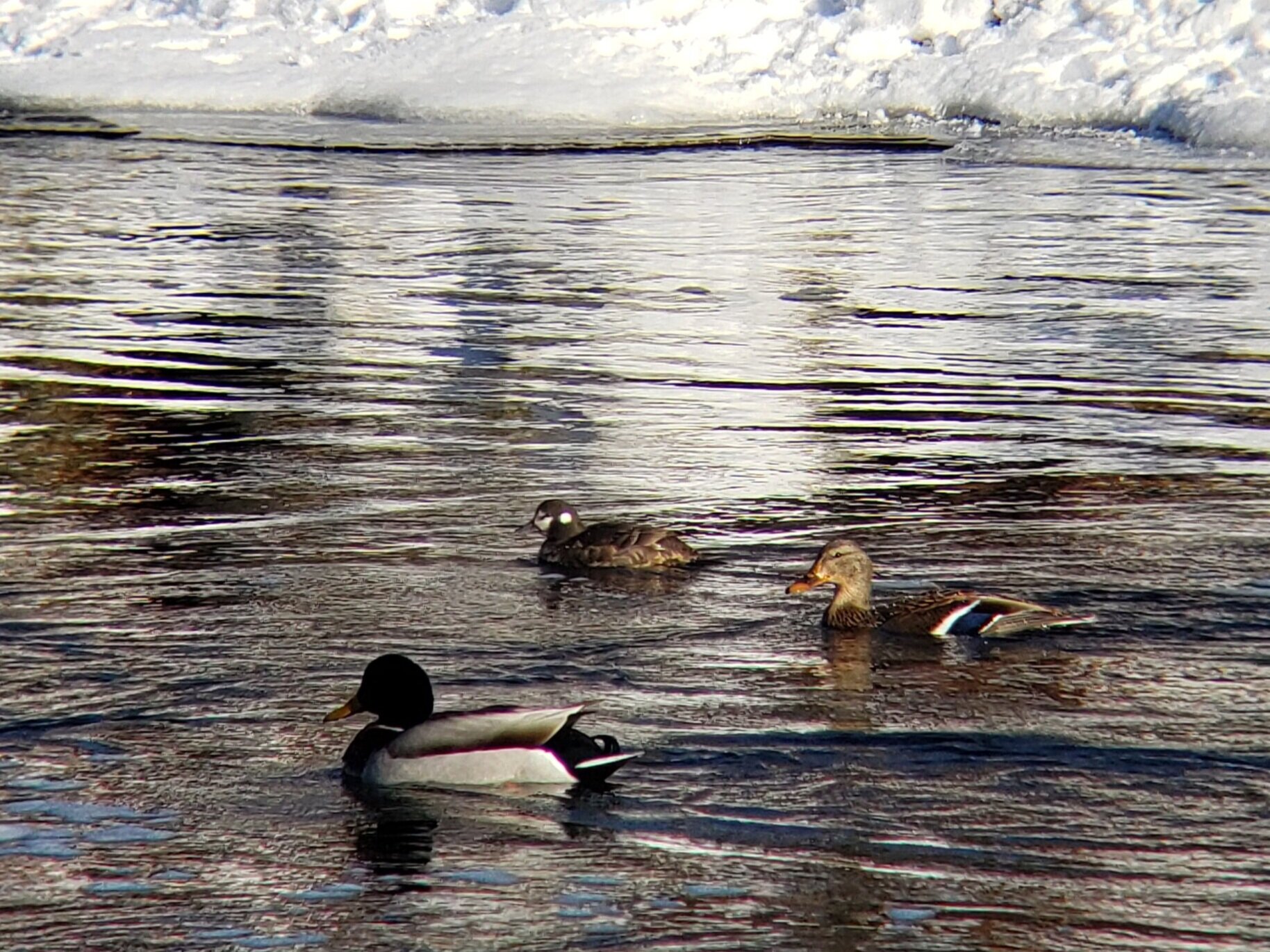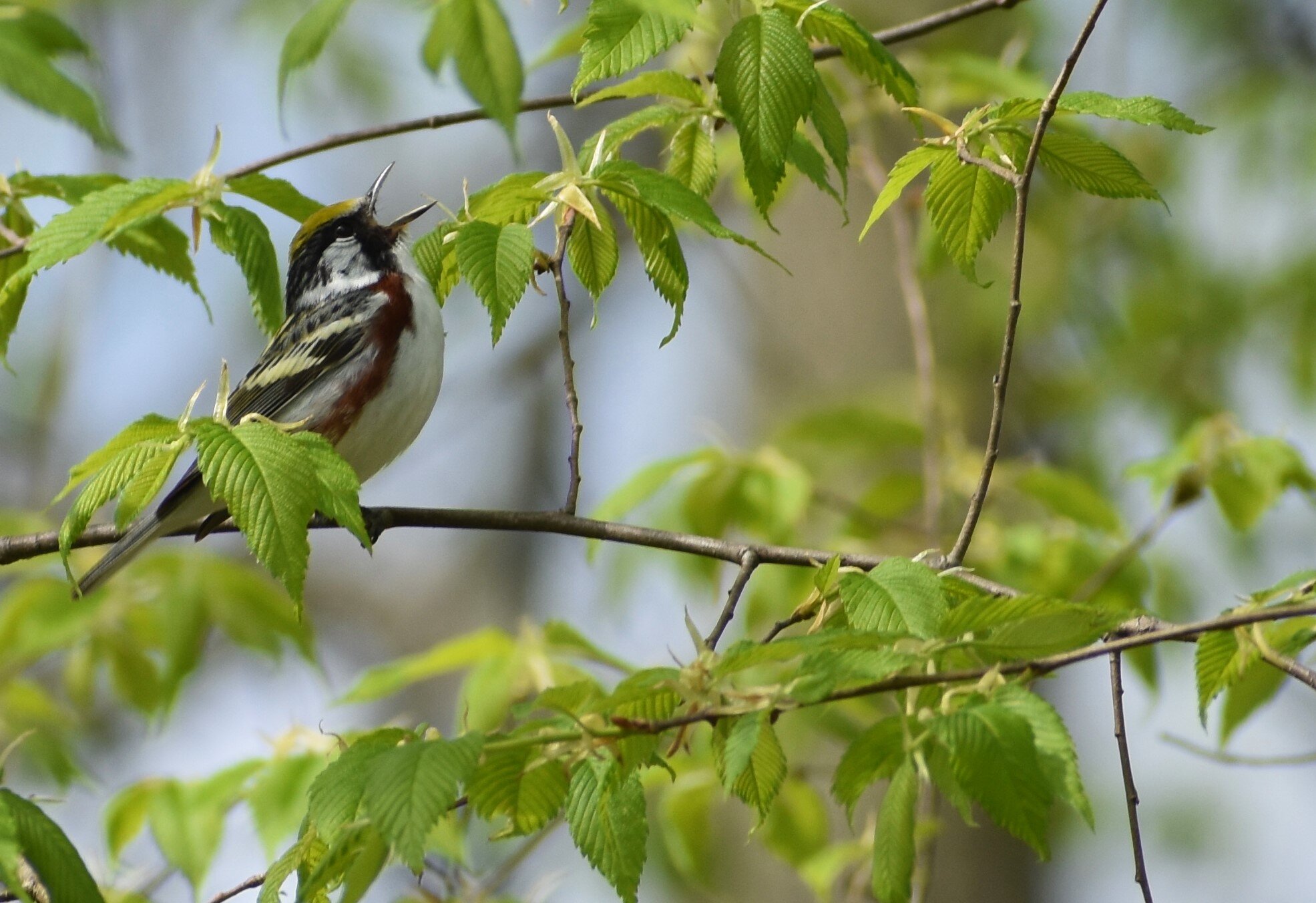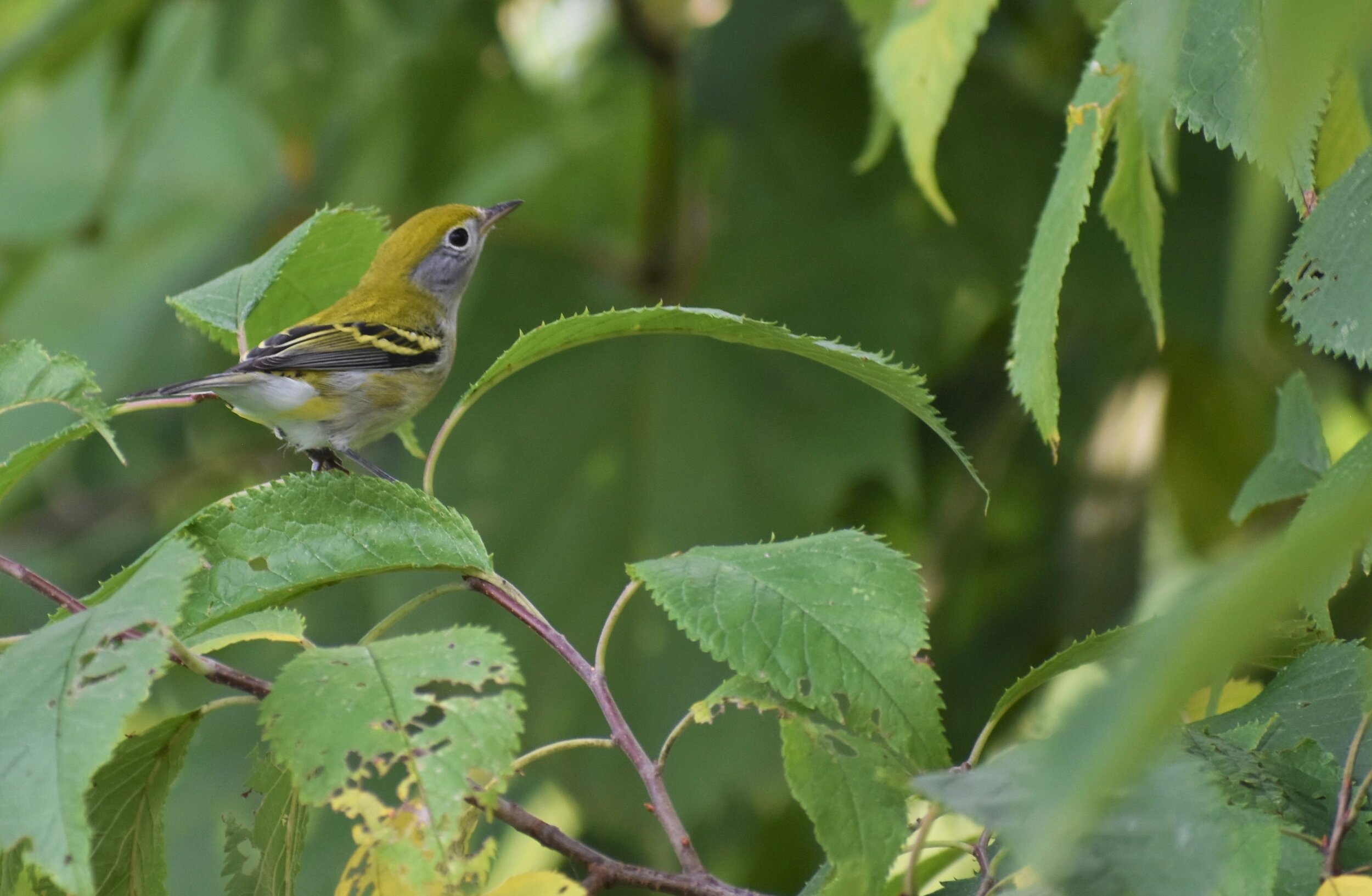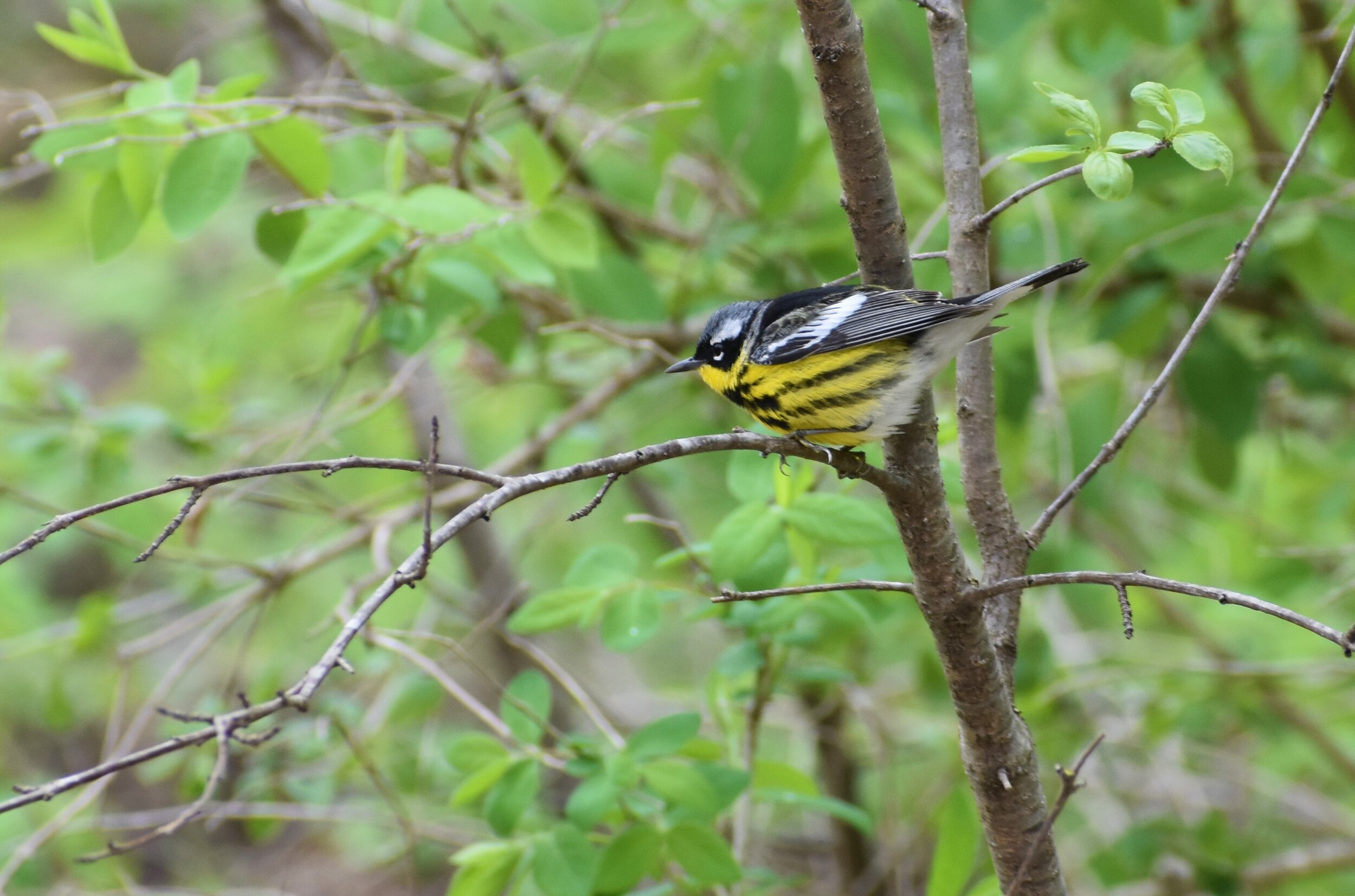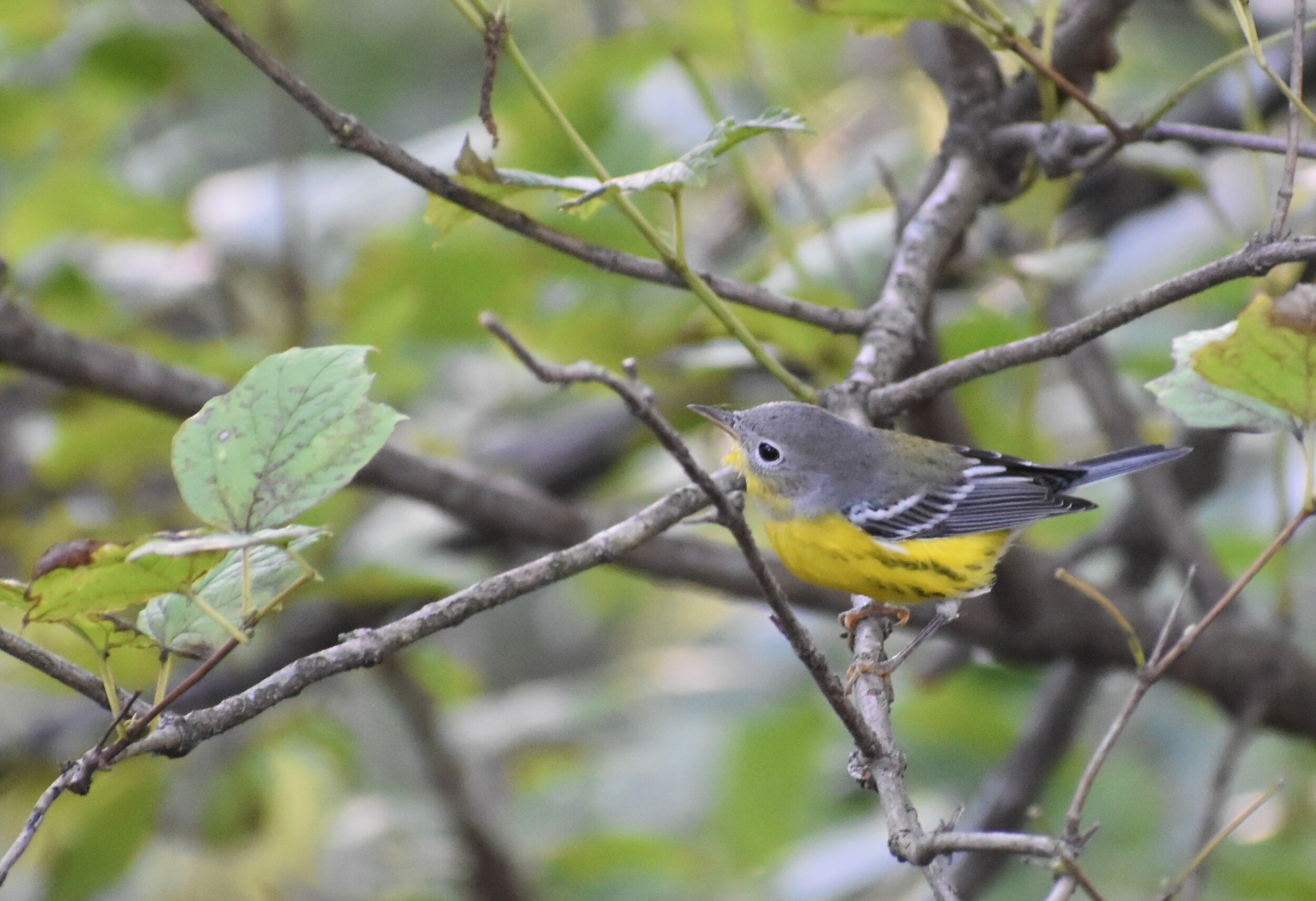This post has been edited on 2/19/21 to remove content featuring Jason Ward. Credible allegations of rape and sexual assault were brought against Jason Ward by Aisha White. You can learn more about this developing story in this article from Audubon that provides a summary of recent events. We stand with Aisha and admire her bravery in coming forward. In solidarity with Aisha, references and links to Jason’s work have been removed from this post.
Welcome back to the Entryway to Birding blog! Another week has gone by and these hot temps are still lingering. We’re definitely in the thick of summer and the birding can feel a bit slow. Have you been finding ways to get out and bird, despite the heat? Or have you switched your attention, like many do, to the gorgeous butterflies and dragonflies that abound? I’ve still been chasing that perpetual breeze and birding by bike—read more about some of my favorite destinations in last week’s blog!
In this week’s post, I’ve got some suggestions for how new birders can take advantage of this summer birding lull to get prepped and ready for fall migration.
Wait, what? Fall migration, you say? Isn’t that, like, two months from now?
No, my friends. Fall migration begins sooner than you think. It’s just around the corner, and it will bring some new birding challenges that you’ll want to be prepared for. Let’s take a look!
Pictured here is a greater yellowlegs and a lesser yellowlegs. Both of these common shorebirds are early fall migrants that may start appearing in late June or early July. I’ve already seen some poking around a few flooded fields this season, so keep your eyes peeled! Photo by Brandyn Kerscher
Sure enough, the shorbs are back!
Shorebirds (also lovingly referred to by some birders as “shorbs”) are some of our earliest fall migrants. Many of them start moving through the state by late June or early July—which means that, yep, they are already here! The Madison area has already seen some of our first returning shorebirds in small numbers like greater and lesser yellowlegs, least sandpipers, spotted sandpipers, and solitary sandpipers. I guarantee more will be on their way soon!
It may feel like a long time since you’ve last seen a shorebird. And if you are anything like me, your shorebird ID remains incredibly shaky when it comes to anything that isn’t a yellowlegs. Don’t worry too much—shorebirds are hard in any season and can be a real challenge for birders of any skill level. It’s worth doing a quick refresh on your shorebird ID so you are ready for the next wave of southbound migrants.
Spotted sandpipers are always fun to pick out from a crowd—you’ll find them bobbing their tails up and down constantly! Photo by Caitlyn Schuchhardt
Here are some resources that I’ve found helpful to learn more about shorebird ID:
Keys to Identifying Shorebirds (article)
This article by renowned bird guide author and artist David Sibley is short, sweet, and oh so informative. He breaks down shorebirds into four different groups and gives you tips to identify them that don’t purely rely on plumage (which is surprisingly the last thing one tends to look at when it comes to shorebird ID). I love the graphic on this article that shows the unique foraging patterns of different species, which can help you pick them out from afar.
Shorebird Identification (PowerPoint slides)
These PowerPoint slides from Point Blue Conservation Science are one of the resources provided to folks participating in the Pacific Flyway Shorebird Survey, and they have some wonderfully helpful ID tips and side-by-side comparisons of easy-to-confuse shorebirds. It’s designed for the West coast so there are some birds featured in there that are not regular visitors to Wisconsin, but about 75% of the ones mentioned can be found here, so definitely take a look. I like that these slides point out some key field marks for each species, but don’t overwhelm you with info. There are some good book recommendations at the beginning too, if you’re looking to invest in a shorebird-specific guide.
Be a Better Birder: Shorebird Identification (online course)
If you are dedicated and really want to up your shorebird skills, consider investing in this online, six-part course that you can complete at your own pace. This is part of the Cornell Lab of Ornithology’s Bird Academy series, which offers a number of online courses to improve your birding skills. They come at varying price points, and this one is $29.99. But it’s pretty darn good, and once you invest in it, you can access it again and again and again—perfect for when you need a refresher next season! This is a good option for anyone who is really missing the opportunity to learn from a field trip leader, since you get some excellent instruction from expert birders.
What else will fall migration bring?
A female harlequin duck hangs out with some mallards at Tenney Park in Madison, WI. She was a rare visitor and stuck around all winter—much to birders’ delight! Photo by Caitlyn Schuchhardt
Here’s the good news! Fall migration is loooooong. Spring migration seems to come in with a bang and leave before any of us are ready to say goodbye. But fall migration? Fall migration stretches out and makes the most of the season. Shorebirds get things rolling in July and August, then southbound songbirds will start arriving mid to late-August and really peak in September. October brings large numbers of waterfowl, who will continue to move through in November and December, though it’s arguably pretty quiet in that last month unless a funky rarity comes through. (Shoutout to this past year’s female harlequin duck that stuck around Madison all winter on whatever open water it could find!)
That all sounds wonderful, right? I imagine that you, dear new birder, are incredibly excited to see your spring friends again—all those birds whose plumages you studied so hard, that you got so familiar with, whose field marks you’ve ingrained in your mind!
Well, here’s the bad news.
Many of the fall migrants will be returning looking a little different than when you last saw them. Warblers, especially. They swap their bright, showy, mate-attracting plumage for a duller and drabber outfit. Their colors are muted, their field marks harder to distinguish, and they aren’t nearly as vocal, so there likely won’t be a song to clue you into their presence. That’s a triple threat challenge for a new birder.
Take a look at these two images of a chestnut sided warbler—the one on the left singing away in the spring, and the one on the right looking very, very different in the fall. To my newbie birder eyes, these look like completely different species. But woe is me—they are not!
Fall warblers bring new meaning to birding on “hard mode”
So what’s a new birder to do? How does one prepare oneself for all the warblers one knows and loves, but in completely different outfits? There’s no simple answer to this, but I’d argue that it involves some studying up. Luckily there are some really great resources out there to help you get comfortable with confusing fall plumage.
Here are some resources I’ve found particularly helpful for fall warbler ID:
The Warbler Guide by Tom Stephenson and Scott Whittle (book + free PDFs)
It’s a book! It’s an app for your phone! It’s condensed into free, handy guides you can print for the field or download to your phone! This bird guide is one of the most highly recommended warbler guides out there, jam-packed full of features to help you learn your warblers inside-out, spring or fall. I only recently ordered my copy of this guide, so I can’t fully speak for it just yet, but I’ve had it recommended to me by several folks and I run across it all the time online. It looks like a stellar in-depth resource for those that wanna dive deep, but there are some freebies involved too! Visit this page to download free PDFs of the “Quick Finders” that you can save to your phone and access in the field for handy warbler ID help!
Click here to download the free “Quick Finders” that contain images of all the warblers in their spring and fall plumages, face views, side views, undertail views and more! You’ll be prompted to enter your name and email before the download, but these PDFs are 100% free! Screenshot of one of the Quick Guide pages
An Overview of Eastern Fall Warblers (article)
This handy free guide is put out by the McGill Bird Observatory. It features some really great tips and tricks for remembering what field marks you should pay attention to on fall warblers—with a handy acronym too! They use the acronym WFTU, or What Feathers Tell Us, to help you remember to look at the Wings, Face, Throat, and Undertail. I particularly like how they categorize different groups of warblers—they split them up by whether or not they have wing bars, and from there they group them into catchy sub-groups (like “pale n’ plain”) that share similar features to help you narrow down your ID.
If you put in some time to practice and get familiar with the new looks of your favorite warbs, you’ll be just fine. Will you be confused? Oh yes. Will you frustrated? Quite likely. But will it be worth it? Always.
Take a peek at another fun example of what you have to look forward to—a stunning magnolia warbler in spring plumage on the left, and then in fall plumage on the right:
No matter the month of the year, birding has something exciting for us. That’s turning out to be one of my favorite aspects of this hobby—each season has something to look forward to.
At the same time, those seasonal changes aren’t without some challenge, especially for new birders who are flying solo without the aid of our regular field trips and bird walks. I know there have been plenty of times this spring and summer where I’ve been frustrated and confused, really wishing that I had a group of birders with me to help me muddle through an ID. We’ll get back to our programming eventually, but for now you may have to study up at home to get that extra boost in your ID skills!
So take a break from the heat, chill in the shade, and brush up on your shorbs and warbs with this week’s collection of resources. If you start studying now, you’ll be ready for fall migration in no time!
That’s all for this week. Happy birding!
_____
Caitlyn is the Communications and Outreach Assistant at Madison Audubon. She’s crazy for birds because they changed her life. She’ll be back next Monday with some tips and tools for birders, new and experienced! Between now and then, she’d love to hear about the birds you’re seeing and hearing. Leave a comment below or email to drop her a line!


